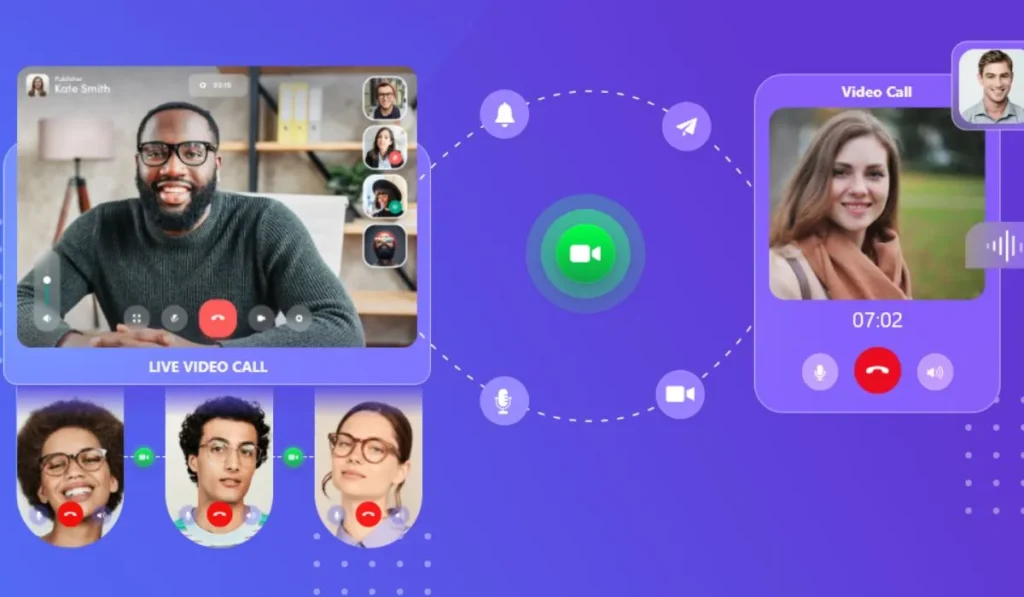
In a world where remote work, digital learning, virtual events, and long-distance relationships are part of daily life, video calling apps have become an essential part of communication.
But as user expectations grow and technology evolves, what truly makes a great video calling app in 2025?
Here are the top 10 features every modern video calling app must include to stand out and deliver an exceptional user experience.
1. Ultra HD Video and Audio Quality (4K Support)
Gone are the days of pixelated faces and laggy sound. In 2025, users expect crystal-clear 4K video resolution and high-fidelity audio powered by advanced codecs and AI-driven noise reduction. Adaptive streaming should automatically adjust to network conditions for seamless calls.
Why it matters: Clear communication fosters trust, engagement, and productivity — whether in business meetings or casual chats.
2. End-to-End Encryption & Enhanced Privacy Controls
Security is no longer optional. With increasing concerns over data privacy, users demand end-to-end encrypted calls, customizable privacy settings, and zero data retention policies.
Must-have additions: Password-protected meetings, user consent notifications, and biometric login.
3. AI-Powered Background and Noise Management
AI has revolutionized virtual environments. Today’s apps should offer smart background blur/removal, custom virtual backgrounds, and real-time noise suppression — all powered by AI to enhance focus and professionalism.
Pro tip: Integration with user environments (e.g., workspaces or brand themes) adds a personal touch.
4. Multi-Device Sync and Cross-Platform Support
A modern video calling app should work flawlessly across desktop, mobile, web, tablets, and smart TVs. Instant switching between devices without dropping the call is crucial for today’s multitasking users.
Example: Start a call on your laptop, continue it on your phone during a walk.
5. Real-Time Collaboration Tools
The future of video calling is interactive. Users want tools like:
- Live screen sharing
- Whiteboards
- Document co-editing
- Polls and breakout rooms
These features are especially useful in remote work, online education, and telehealth.
6. Meeting Recording with Smart Summarization
Users often need to revisit discussions. Your app should offer:
- Cloud recording
- Automatic transcription
- AI-generated meeting summaries
- Searchable timestamps
Bonus: Voice-to-text notes in multiple languages for global accessibility.
7. Custom Avatars & AR Filters (Metaverse Integration)
In 2025, digital identity is big. Apps should allow users to create realistic avatars or apply AR filters for fun, anonymity, or expression. For work, metaverse-like meeting spaces can enhance immersion.
Use case: Virtual classrooms, social events, and game nights.
8. Instant Join Without App Download
Frictionless experience is key. Users should be able to join calls directly from browser links, without downloading an app. Integration with calendar platforms and smart notifications adds more convenience.
Especially useful for guests, clients, or first-time users.
9. Advanced Moderation and Host Controls
Meeting hosts need better control in large calls or webinars. This includes:
- Mute all
- Control screen sharing
- Block/report participants
- Waiting room features
- Time limits
For large meetings, AI-assisted moderation (e.g., detecting offensive content) is a growing trend.
10. Seamless Integration with Productivity Tools
Modern users want apps that integrate smoothly with Google Workspace, Microsoft 365, Slack, Trello, Notion, and CRMs. APIs should allow custom workflows, automated scheduling, and analytics dashboards.
In enterprise settings, this is often a dealbreaker.
Final Thoughts
The video calling space is evolving fast, and user expectations are higher than ever. Whether you’re building a new app or refining an existing one, these 10 features are the foundation of a user-first, future-ready video calling experience.



